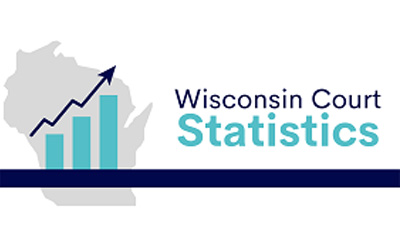
How many felony cases were filed five years ago?
How many jury trials were held last year?
How long does it take to resolve a typical divorce case?
How many civil cases are likely to be filed next year?
The answers to these questions, and many more, can be found in court data. From an internal perspective, access to high-quality and timely data can help court system leaders make informed decisions regarding funding, staffing, and administrative policy changes. From the external perspective, this information provides transparency to the public and can help legislators and justice system partners better understand court system operations and trends.
Why is Data So Important?
At the height of the COVID-19 pandemic, court system leaders relied upon data to help guide short-term decision making in response to a statewide emergency. Now that the most severe pandemic-related disruptions have eased, counties have been able to use case data to better understand and balance judicial workloads and more effectively address local and case type-specific backlogs. Court statistics also proved helpful in supporting several requests for federal grants aimed at pandemic recovery.
In addition to the use of court data for short-term operations management, the ability to analyze trends is critical to effective long-term planning.
Wisconsin is not alone in its increased use of data analysis to support business intelligence. In its 2022 Trends in State Courts report, the National Center for State Courts (NCSC) emphasized how important data has become to state court administration, in general:
“The need for robust and consistent case data is central to the core purposes of courts: to keep records of legal proceedings and to provide timely and efficient administration of justice.”
In order to meet short- and long-term data reporting and analysis needs, a workgroup comprised of Office of Court Operations staff and district court administrators collaborated for more than 18 months to design and implement a new, updated array of statistical reports and analysis tools. With the support of the workgroup and several additional staff consultants from other Court System offices, including Consolidated Court Automation Programs (CCAP), Court Operations staff transitioned to a new data storage and analytics platform. The resulting circuit court data warehouse focuses on general court statistics, case management data, and business intelligence.
Court Statistics
A large selection of statistical reports are already posted in pdf format on the Wisconsin Court System website. These reports are indexed by year and include state- and county-level data on a range of topics, such as the number of case filings, case dispositions, and jury trials. While these annual reports are useful, they do not lend themselves well to detailed data analysis, comparison, or long-term trend identification. In contrast, the data warehouse allows staff to quickly analyze data that previously would have required manual re-entry or significant manipulation, both of which are time-consuming, complex tasks.
The data warehouse also enables staff to create statistical reports more efficiently than the previous extraction process. These more timely reports are important because, in addition to helping guide court operations, they assist with management decisions, such as allocating staff and estimating future equipment needs. Court statistics also support sound fiscal policy at the state and local level by allowing staff to more reliably estimate anticipated court fine, fee, and surcharge revenues. As the data warehouse evolves, the Director of State Courts may explore creation of a public-facing data portal, which would allow users to select and view up-to-date summary statistics rather than relying upon the current static PDF reports available on the Court System website.
Case Management
The data warehouse supports effective case management practices by enabling the development and implementation of several dynamic analysis tools. These tools can be used to examine a wide range of court management metrics, such as the number of pending circuit court cases, the frequency of trial adjournments, and the time elapsed between case filing and completion (disposition). Progress toward state-level goals, as well as comparison with national standards, can provide useful information to help improve caseflow management.
Business Intelligence
Business intelligence is the broadest and most quickly-evolving aspect of the data warehouse. Through the use near real-time data visualization, the data warehouse allows staff to view timely, detailed court data. The data warehouse also allows staff to streamline, and in some cases automate, certain recurring tasks that had previously required a great deal of staff effort. For example, the Office of Court Operations can more easily determine how court record events are being handled at the county level. This knowledge can help support targeted training and recordkeeping policies that can help support more consistent data entry into the case management system.
The advantages of creating a data warehouse are already apparent. As a result of the improved statistical analysis tools, the court system was able to improve the quality of its annual submission to the Court Statistics Project, an annual effort of the NCSC. Wisconsin’s data submission now includes data regarding interpreter usage and the number of cases with self-represented litigants, both of which were previously unavailable. In addition, the data warehouse improved Wisconsin’s ability to report on the manner of case disposition.
The information generated by the data warehouse will help the courts better understand past trends and provide accurate answers to current questions. More importantly, the data warehouse will help the court system be better prepared for what lies ahead.

